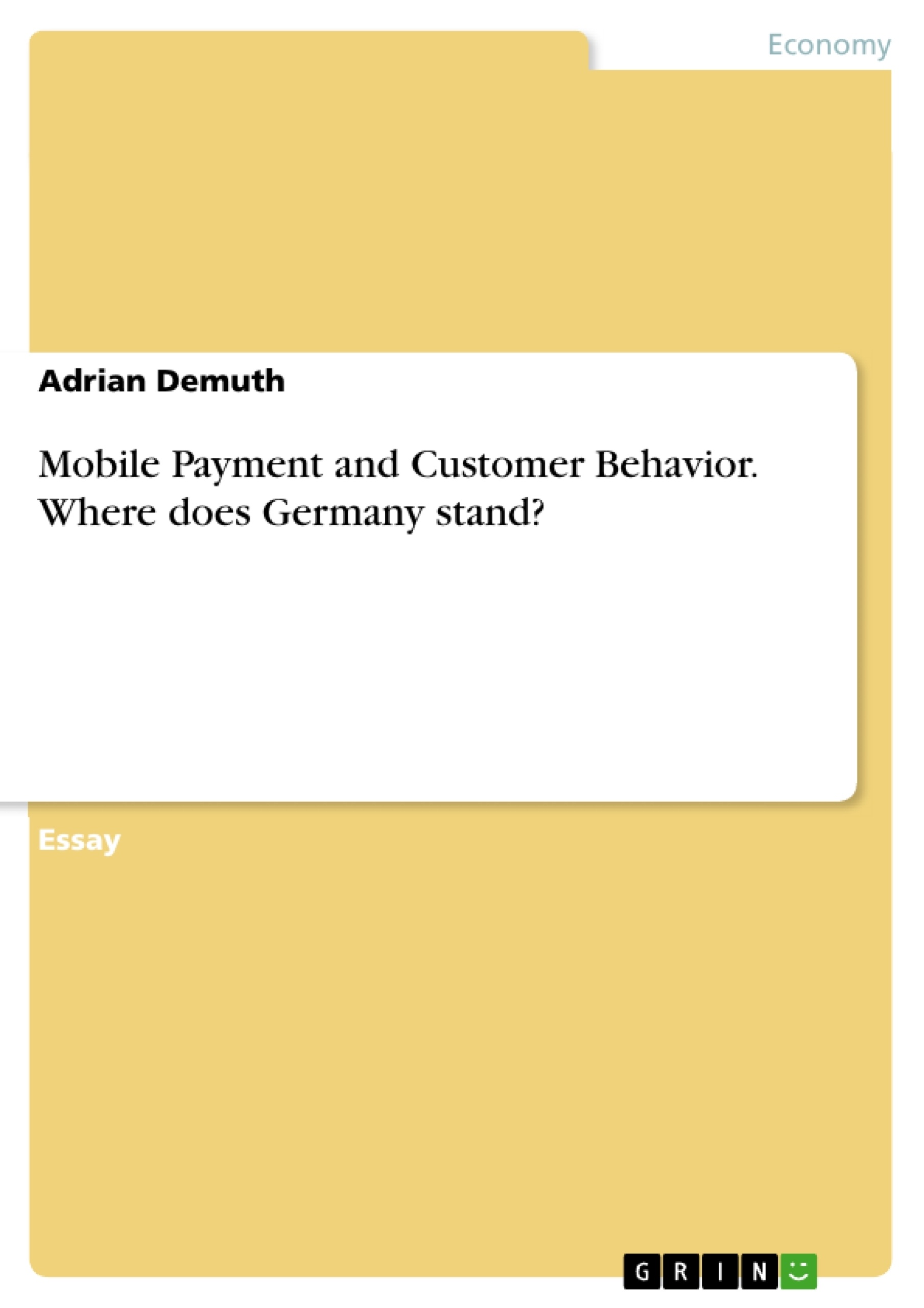Mobile Payment represents a global trend of the future, which is already commonplace in some countries. This trend needs to be examined and analysed more closely. Which effects does Mobile Payment have on the consumer and which problems might be the reason for the different acceptance and spread of Mobile Payment? These questions are discussed in more detail in the following paper, which deals with the topic of Mobile Payment and consumer behaviour.
Taking photos or videos, checking for news, chatting with friends while watching videos: The role and the impact of smartphones and its mobile apps has changed more and more over the last years. For most people, it has become an indispensable tool. While going out for shopping of groceries or clothes people nowadays just carry their most important things with them. These are often their keys, wallets, and smartphones.
But the number of these things could decrease further in the next few years due to the technological developments of the smartphone. For example, unlocking smart locks via Bluetooth enabled smartphones, or regarding the elimination of the wallet, the development of Mobile Payment systems. The Smartphone is the central medium of the future, which will have to bridge the gap between easy usability and secure and fast processes. Especially concerning Mobile Payment which represents a new way of paying via smartphone. New providers are offering payment methods and a changed purchasing behaviour of end customers increasingly determines the product landscape and the market shares of these payment systems.
Interestingly, however, Mobile Payment is a very controversial topic. The controversy can already be seen here if one briefly looks at the global spread and acceptance of Mobile Payment. While in Germany currently only about 25% of all people are users of Mobile Payment, 71% of all people in Chinese use Mobile Payment systems.
Table ofContent
List offigures
List of abbreviations
1. Introduction
1.1 Motivation and Relevance
1.2 Objective
1.3 Structure
2. Fundamentals „Mobile Payment”
2.1 Definition
2.2 Development
2.3 Technical Requirements and Forms
2.3.1 Basic Requirements
2.3.2 Transmission standards
2.3.3 Provider
2.4 Fields ofApplication
3. Acceptance & Spread of Mobile Payment
3.1 International Dissemination
3.2 Acceptance and Dissemination in Germany
4. Impact of Mobile Payments on the Willingness to spend and control
4.1 Decrease in Spending Control
4.2 Examples ofMobile Payment Models to increase Expenditure Control
5. Limits and Problems of“Virtual Purses”
5.1 Privacy
5.2 Security
5.3. Transaction Costs
6. Opportunities of “Virtual Purses”
6.1 CustomerLoyalty
7. Examples ofthe Implementation ofMobile Payment
7.1 PayPal - Implementation in Online Trade
7.2 Sparkasse - Implementation in direct Trade (Stationary POS)
8. Conclusion
List ofAnnexes
- Citation du texte
- Adrian Demuth (Auteur), 2020, Mobile Payment and Customer Behavior. Where does Germany stand?, Munich, GRIN Verlag, https://www.grin.com/document/1362190
-

-

-

-
Téléchargez vos propres textes! Gagnez de l'argent et un iPhone X. -

-
Téléchargez vos propres textes! Gagnez de l'argent et un iPhone X. -

-
Téléchargez vos propres textes! Gagnez de l'argent et un iPhone X. -

-
Téléchargez vos propres textes! Gagnez de l'argent et un iPhone X. -

-
Téléchargez vos propres textes! Gagnez de l'argent et un iPhone X. -

-
Téléchargez vos propres textes! Gagnez de l'argent et un iPhone X. -

-
Téléchargez vos propres textes! Gagnez de l'argent et un iPhone X. -

-
Téléchargez vos propres textes! Gagnez de l'argent et un iPhone X. -

-
Téléchargez vos propres textes! Gagnez de l'argent et un iPhone X.

